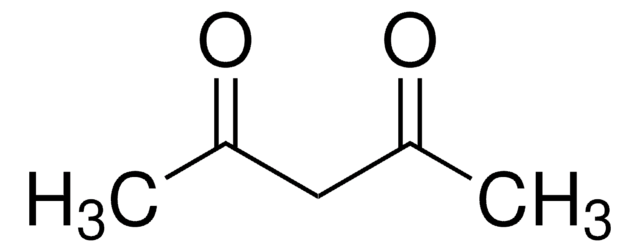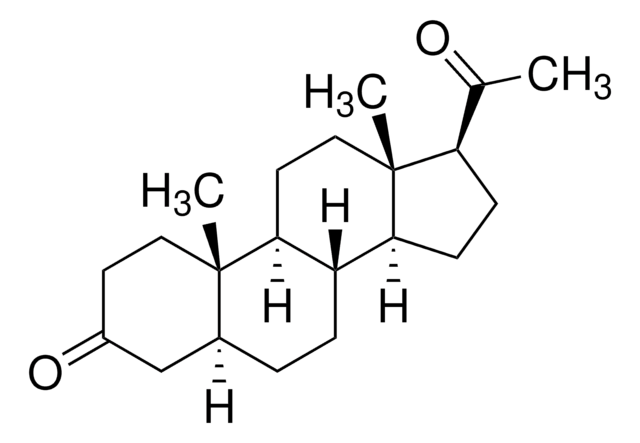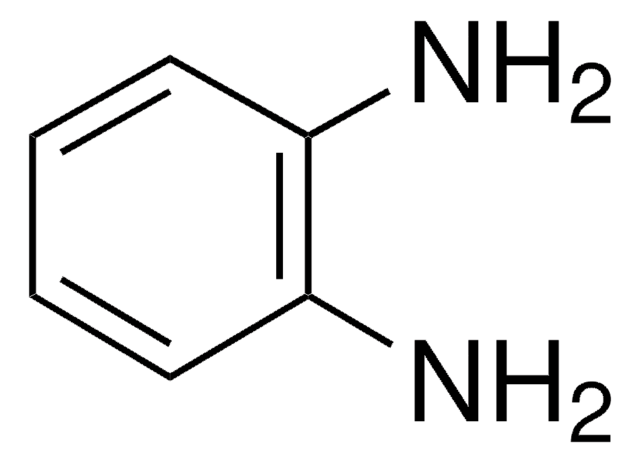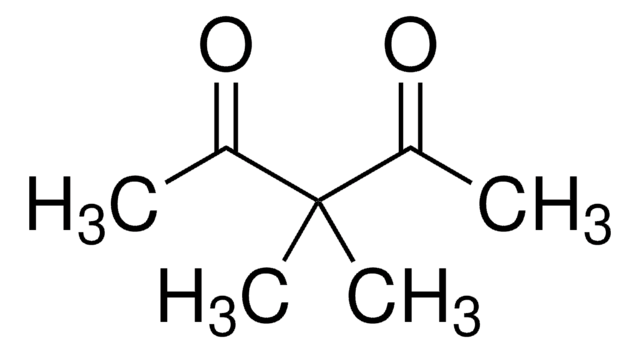P7754
Acétylacétone
ReagentPlus®, ≥99%
Synonyme(s) :
2,4-pentanedione
About This Item
Produits recommandés
Densité de vapeur
3.5 (vs air)
Niveau de qualité
Pression de vapeur
6 mmHg ( 20 °C)
Gamme de produits
ReagentPlus®
Pureté
≥99%
Forme
liquid
Température d'inflammation spontanée
662 °F
Limite d'explosivité
11.4 %
Indice de réfraction
n20/D 1.452 (lit.)
pH
6 (20 °C, 200 g/L)
Point d'ébullition
140.4 °C (lit.)
Pf
−23 °C (lit.)
Densité
0.975 g/mL at 25 °C (lit.)
Chaîne SMILES
CC(=O)CC(C)=O
InChI
1S/C5H8O2/c1-4(6)3-5(2)7/h3H2,1-2H3
Clé InChI
YRKCREAYFQTBPV-UHFFFAOYSA-N
Informations sur le gène
human ... ACHE(43) , BCHE(590) , CES1(1066)
Vous recherchez des produits similaires ? Visite Guide de comparaison des produits
Description générale
Application
- A multifunctional ligand in the synthesis and feasible functionalization of gold nanoparticles (AuNPs).
- A reactant to synthesize 9,10-dihydroacridines by reacting with methyl acetoacetate and Morita-Baylis-Hillman acetates.
- A reagent in the synthesis of ZrO2(zirconium dioxide) via hydrolysis of Zr(OC3H7n)4. Acetylacetone controls the hydrolysis and condensation rates of alkoxides and thus, the nucleation and growth rates of oxides.
Conditionnement
Informations légales
Mention d'avertissement
Danger
Mentions de danger
Conseils de prudence
Classification des risques
Acute Tox. 3 Dermal - Acute Tox. 3 Inhalation - Acute Tox. 4 Oral - Flam. Liq. 3
Code de la classe de stockage
3 - Flammable liquids
Classe de danger pour l'eau (WGK)
WGK 1
Point d'éclair (°F)
95.0 °F - closed cup
Point d'éclair (°C)
35 °C - closed cup
Certificats d'analyse (COA)
Recherchez un Certificats d'analyse (COA) en saisissant le numéro de lot du produit. Les numéros de lot figurent sur l'étiquette du produit après les mots "Lot" ou "Batch".
Déjà en possession de ce produit ?
Retrouvez la documentation relative aux produits que vous avez récemment achetés dans la Bibliothèque de documents.
Les clients ont également consulté
Notre équipe de scientifiques dispose d'une expérience dans tous les secteurs de la recherche, notamment en sciences de la vie, science des matériaux, synthèse chimique, chromatographie, analyse et dans de nombreux autres domaines..
Contacter notre Service technique












